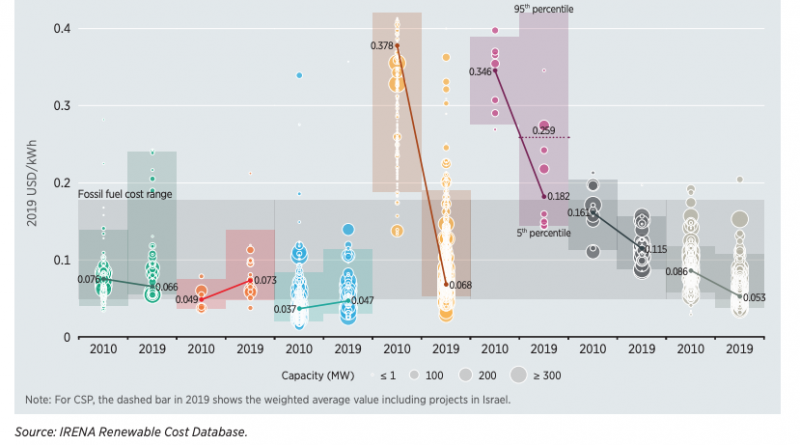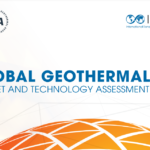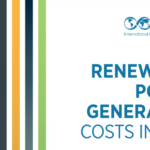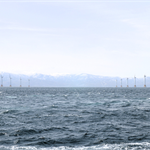IRENA Renewables Cost Report – Geothermal remains competitive choice
Energy Disrupter
In a report on the cost of renewables power generation cost, IRENA shares an overview on costs, LCOE and capacity factors for different geothermal power generation technologies. Key take away is that geothermal remains competitive with no real value given to baseload attribute.
In a recently released report, the International Renewable Energy Agency (IRENA) shares an update on the Renewable Power Generation Costs in 2019.
Newly installed renewable power capacity increasingly costs less than the cheapest power generation options based on fossil fuels. The cost data presented in this comprehensive study from the International Renewable Energy Agency (IRENA) confirms how decisively the tables have turned.
More than half of the renewable capacity added in 2019 achieved lower electricity costs than new coal. New solar and wind projects are undercutting the cheapest of existing coal-fired plants, the report finds. Auction results show these favourable cost trends for renewables accelerating.
The report looks at onshore and offshore wind power, solar power PV and concentrating, hydropower, geothermal, and bioenergy.
The focus and key findings of the report mostly look at solar and wind power, but the geothermal chapter provides some rather insightful details.
While growth remains modest for geothermal, with 682 MW added in 2019 and a new record, so IRENA, the global weighted average levelized cost of electricity generation of projects commissioned in 2019 was USD 0.073/ kWh. With slower growth from 2010 to 2013, weighted-average costs were based only on a handful of projects. But with at least 440 MW added per year since 2014, trends to be reported have been more stable.
“Between 2014 and 2019, total installed costs increased from USD 3 570/kW to USD 3916/kW. In 2019, the total installed costs of the majority of newly commissioned plants spanned the range USD 2,000 to USD 5,000/kW.
In 2019, the global weighted-average capacity factor for newly commissioned plants was 79%.
For the years 2007-2021, the data from the IRENA Renewable Cost Database suggests that over the next couple of years, the global weighted-average LCOE could fall to just over USD 0.05/kWh in 2021. However, this will depend on whether projects meet their commissioning goals.”
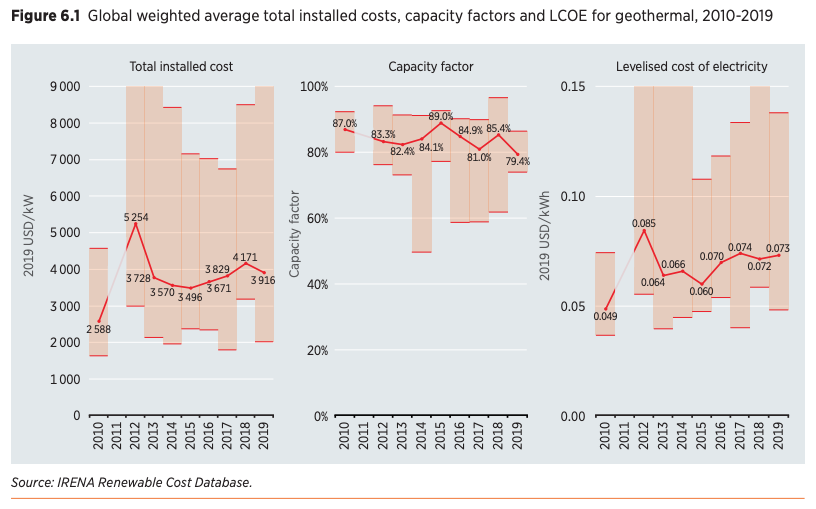
Interesting is the data presented on installed costs by project for geothermal … trying to read out some trend here is tricky, but likely key take away might be that the different technologies of power generation from geothermal resources are more and more moving closer together cost wise … and that flash-type plants are still a key element. That might actually be a distorted view, as most of the development while on smaller scale per unit is actually happening on binary-cycle type plants.
An interesting element that is highlighted – while only individually are the capacity factors, or the percent of time plants are operating on a daily basis that ranges from solar PV at about 18%, onshore wind power at 35.6%, offshore wind at 43.5%, solar concentrated power at 45.2%, hydropower at 48.4%, bioenergy at 70%, geothermal represents 79.4% (which seems low as it ranges all around 82-89% in previous years).
Unfortunately the report does not provide for a graphical comparison of capacity factors, which would have been very useful. At the same point an analysis on the value of higher capacity factors in establishing prices for
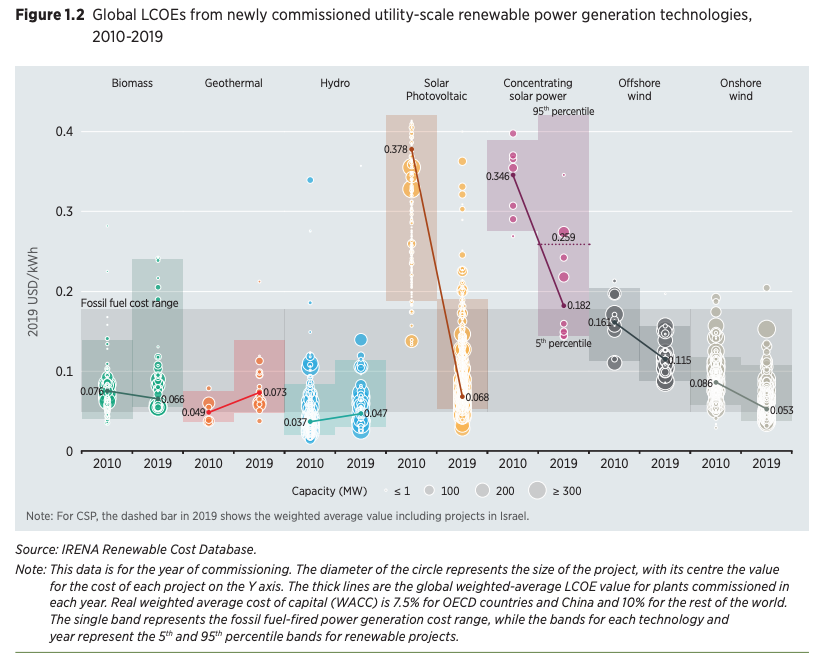
The levelized cost of electricity generation also shows the interesting fact that values are more and more getting closer to the $0.05/ kWh and below $0.10/ kWh.
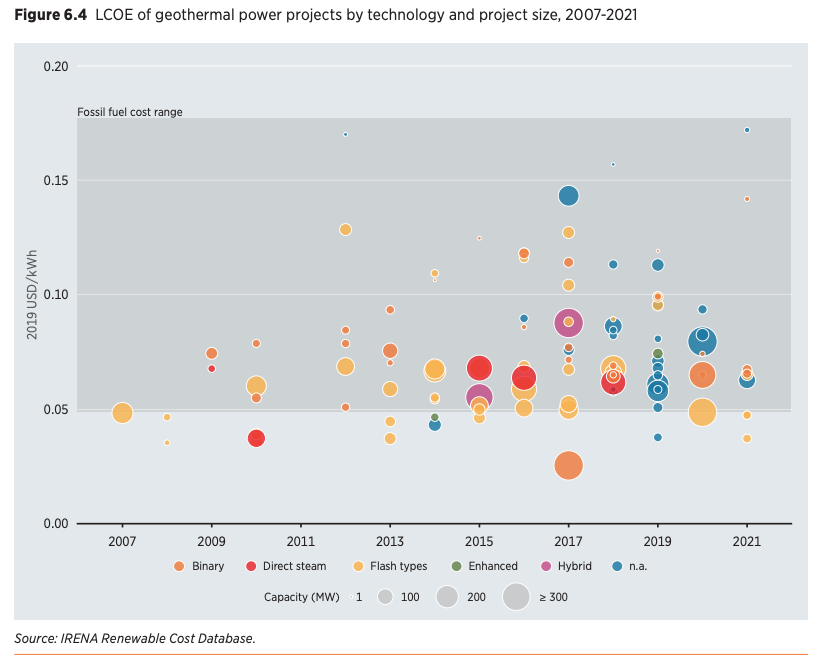
Source: IRENA (and download option for the report)

